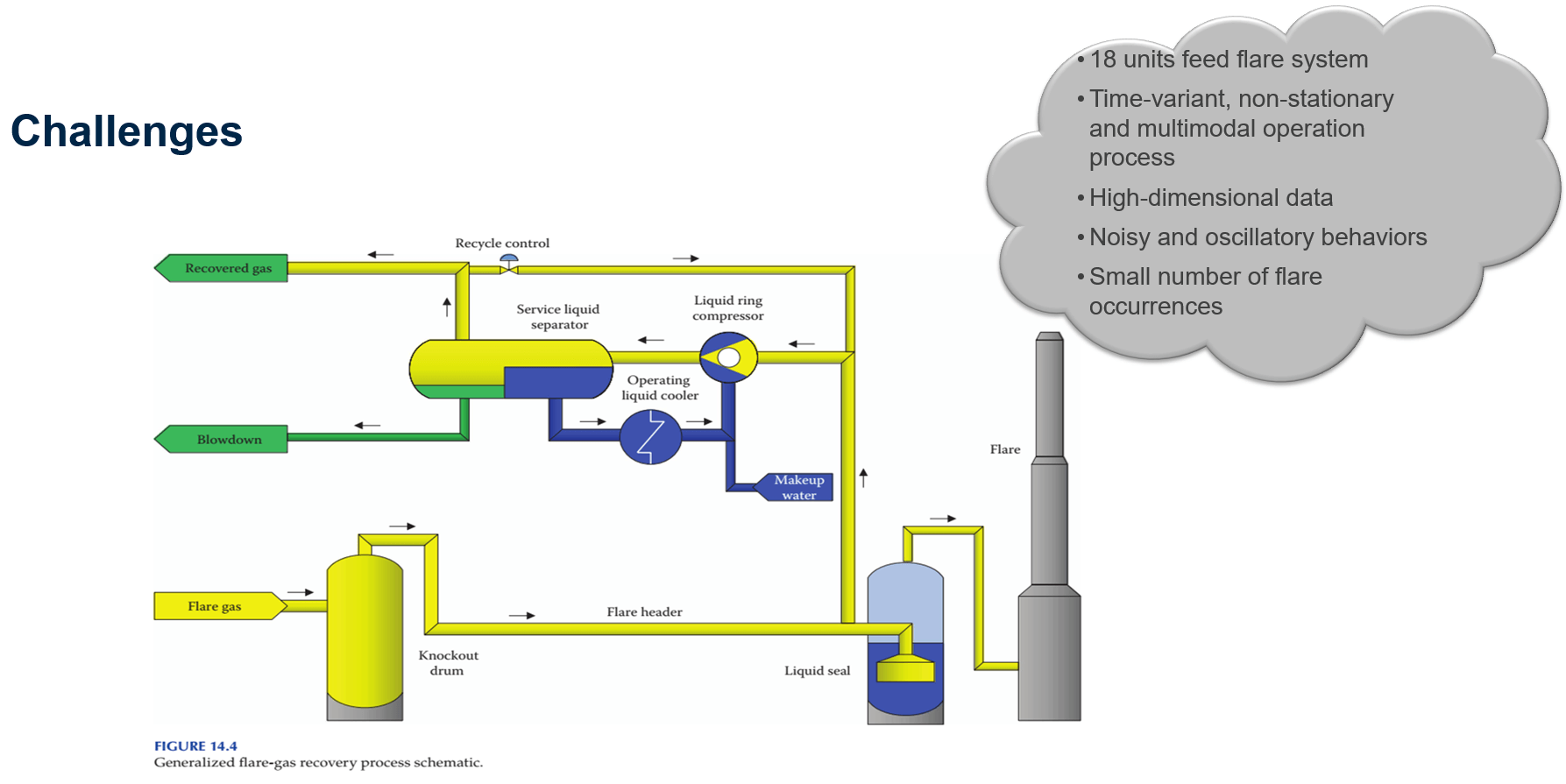Emerson’s Richard Xu presented, Early Prediction of Flare – Big Data at the 2021 4C Health, Safety & Environmental conference. Here is the presentation abstract:
A Data Analytics System able to predict 79% of the flare events. We present the successful application of a hierarchically distributed monitoring approach for flare event prediction in a refinery with a flare gas recovery system installed. We use various data analysis tools, including principal component analysis, slow feature analysis, and wavelet transform, under a distributed process monitoring framework to achieve monitoring solutions. The application of hierarchically distributed monitoring framework using both time and frequency domain techniques is able to detect 11 out of 14 events before they actually occurred.
Richard opened showing a flare gas recovery unit that works based on the pressure in the flare manifold. The purpose of their research was to find ways to predict flare events early enough to be able to avoid where possible. For the case study he presented, the downstream producer had 18 units feeding the flare gas recovery system.
The research team collected a year’s worth of more that 100 process measurements along with the 10 flare events that occurred that year. The data indicated a periodic behavior changes prior to each flare event.
The first attempt at uncovering a solution was using a fast Fourier Transform and filtered with Principle Component Analysis. The model was able to predict 5 of the 14 flare events, so it was not good enough.
They next looked at hierarchical and hybrid approach. Detection techniques included:
- PCA – principal component analysis
- DPCA – dynamic PCA (account for time lags)
- WT – wavelet transform
- SFA – slow feature analysis (include derivatives of PV)
- H – hierarchically apply to individual units and then overall
They collected data at a unit-wise level to isolate the fault causes. Each unit’s data was subjected to PCA and Wavelet algorithms and then the data between units was recombined. This model produced better results predicting 11 out of the 14 flare events.
After doing review with plant subject matter experts and the operations staff, operator displays were created giving warning conditions for flare when the models indicated conditions that may be leading to a flare event. Two levels of displays one indicating a flare condition may be coming and the second level indicating which unit is the likely culprit.
The conclusions drawn from this project are that this distributed monitoring framework can predict a flare event occurrence ahead of time in most cases. Both time-domain and frequency-domain approaches were implemented at unit-wise and hierarchical monitoring levels. From the historical data, this approach could provide early detection in 11 of the 14 flare events that occurred. This early detection diagnostic could be made visible to operators in a two-level visualization to highlight the impending flare condition and which unit was the cause.
Visit the DeltaV Advanced Control section on Emerson.com for more on the technologies enabling flare event prediction and other challenging process conditions.







